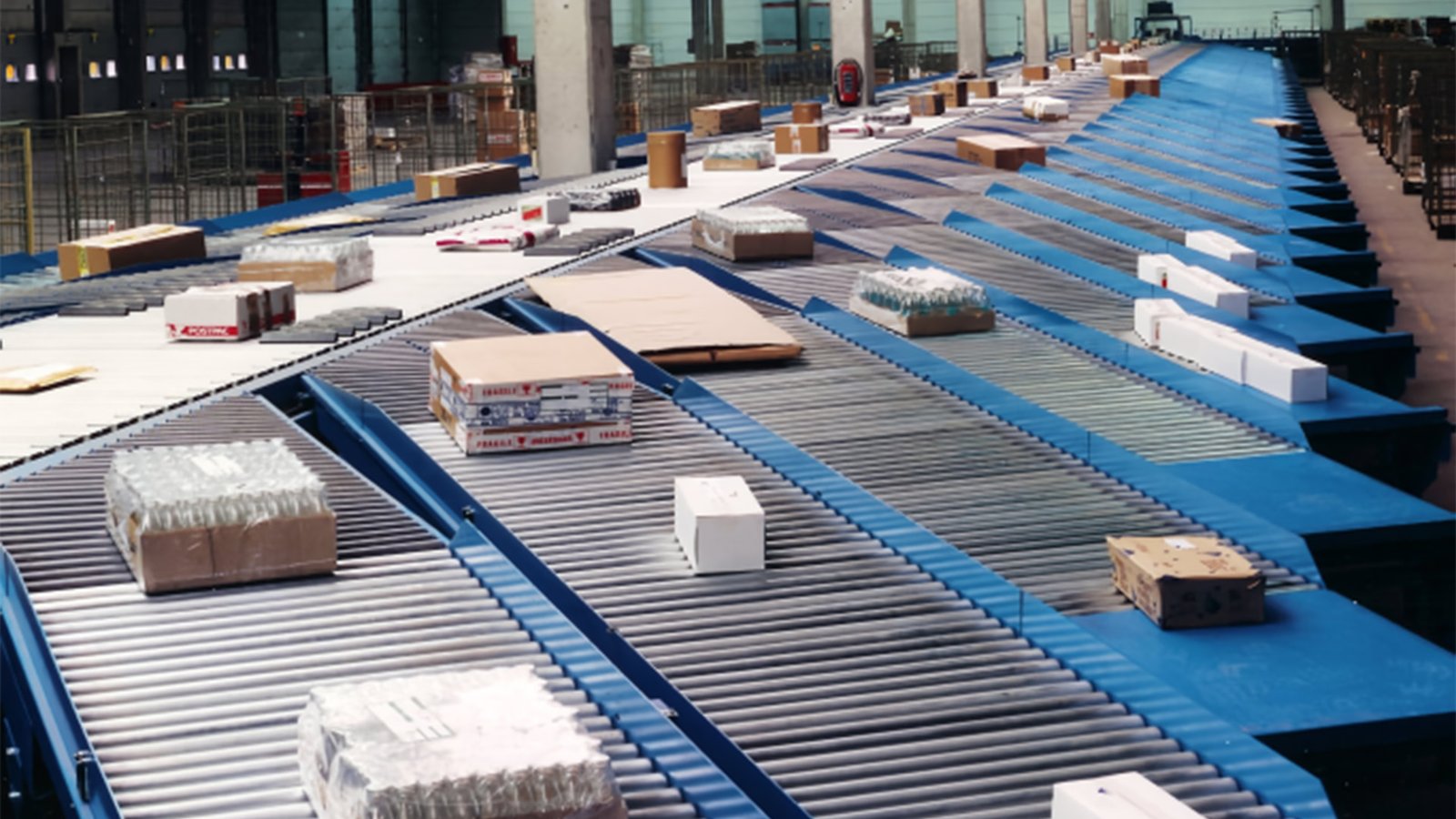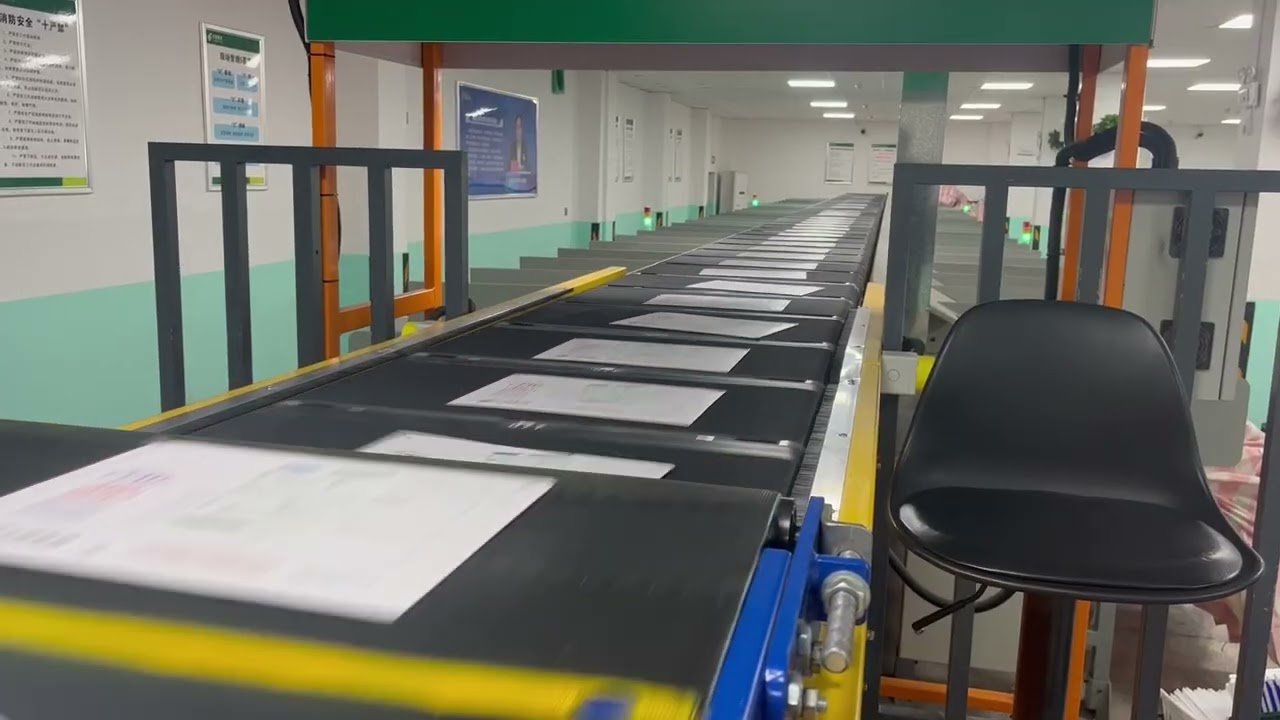Are you wondering what a line sorter is? Whether you are an individual trying to learn about complex sorting techniques, part of a business needing an efficient way to sort items quickly, or just curious about the most up-to-date advancements in technology, this blog post can provide all the answers you need!

What is a Line Sorter
A Line Sorter is a type of machine that is commonly found in production or manufacturing environments. Its primary function is to sort items based on certain criteria and organize them into different lines. The Line Sorter achieves this through the use of various sensors, cameras, and algorithms that allow for the automation of the sorting process.
How Does Line Sorter Work
use various technologies like air jets, movable paddles, or robotic arms to redirect items onto the correct conveyor belt. Afterward, the system may also weigh and scan the products for quality control, returns, or upgrades to the production process. These machines can sort hundreds of items per minute, thus significantly increasing production speed and accuracy.
Once the products are scanned, they are directed to specific locations according to the predetermined sorting parameters. For example, if a production line sorts clothing by size, the line sorter will use sensors to scan each item and separate them into piles according to their size.
Benefits of Using Line Sorter
Cost Savings: Implementing a line sorter in your business can also lead to significant cost savings. With fewer product handling errors, you can reduce the need for costly reworks or corrections. This results in less waste and a more efficient use of resources. Additionally, the speed and precision of a line sorter can help you meet production targets, which can lead to increased sales and revenue.
Improved Quality Control: Line sorters can also improve the quality control of your products. They can detect defects, contamination, and other issues that might not be noticeable to the human eye. By catching defects early on in the production process, you can reduce the number of defective products that make it to the final customer. This can help improve your business’s reputation and increase customer satisfaction.
Flexibility: Line sorters are flexible enough to handle different types of products and materials. They can sort products based on size, weight, shape, or color, allowing you to adapt them to fit your specific business needs. Line sorters can also be customized to perform additional functions, such as labeling, weighing, or packaging.
Employee Safety: With line sorters, employees have less exposure to physically strenuous work. This decreases the likelihood of on-the-job injuries and, concomitantly, reduces the number of worker’s compensation claims, leading to fewer interruptions and delays of production.

Different types of line sorters available in the market
Conveyors and Belt Sorters
Conveyors and belt sorters are among the most popular types of line sorters in the market. Conveyor sorters are capable of sorting several items per minute, while belt sorters are ideal for sorting lightweight items. They can sort products based on weight, size, color, or any other specific characteristic of the product. Additionally, they can work with a variety of container sizes and materials, making them versatile across different industries.
Pneumatic Sorters
Pneumatic sorters use pressurized air to move and sort products. They are ideal for sorting soft, delicate, or lightweight items such as fruits, vegetables, and other food items. This type of line sorter uses gentle blasts of air to move the products to their respective destinations, without causing damage to the products. Pneumatic sorters are more efficient and faster than other manual sorting techniques, making them a popular choice in the food industry.
Optical Sorters
Optical sorters are a more sophisticated type of line sorter that uses advanced camera technology to sort products. They can sort products based on color, size, shape, and even defects in the product. They are designed to meet the needs of the food processing industry, where visual identification is critical to the safety and quality of the product. Additionally, they reduce the risk of contamination and ensure a uniform quality of the product.
Gravity Separators
Gravity separators are used to separate products based on their density. They operate using the principle of gravity, with heavier products sinking to the bottom, while lighter products float to the top. They are ideal for sorting products such as grains, seeds, and minerals. Gravity separators come in various sizes and capacities, allowing industries to choose the best option suited to their needs.
Vibratory Sorters
Vibratory sorters use vibration to sort products by size or shape. The products are introduced onto a vibrating surface that moves the product through a series of screens or chutes, sorting the product by size or shape. They are ideal for sorting products in the pharmaceutical and chemical industries, where precision and accuracy are critical.
Proper Care and Maintenance of Line Sorters
The maintenance of line sorters can directly impact the efficiency and productivity of your manufacturing line. It helps to ensure that the equipment runs optimally, reducing the risk of breakdowns and unexpected downtime. Regular line sorter maintenance also helps to identify minor issues that can escalate into major problems if left unresolved, ultimately preventing costly repairs and replacements.
Additionally, proper care and maintenance of your line sorter contribute to the safety and health of your employees. When the equipment is well maintained and in optimum working order, your team can avoid accidents and injuries caused by faulty machinery.
Here are some of the best practices for line sorter care and maintenance:
Regular Cleaning: Just like any other piece of equipment, line sorters should be cleaned regularly to remove dust, debris, and contaminants. Buildups can affect the equipment’s performance and lifespan, reduce efficiency, and pose risks to your employees’ health and safety.
Lubrication: Proper lubrication is crucial in maintaining the performance and longevity of line sorters. It helps to reduce friction and reduces the risk of heat build-up, which can lead to premature wear and tear.
Regular Inspections: In addition to cleaning and lubrication, regular inspections can help identify early signs of wear and tear and machinery faults. Any defects found should be immediately repaired to prevent more significant problems and costly repairs.

Applications of Line Sorter Common Use Cases in Different Industries
Food and Beverage Industry
One of the most popular industries that applications of line sorter common use cases is the food and beverage industry. The systems are utilized to sort fruits, vegetables, nuts, and other food items for quality control, such as size and shape. The sorting mechanism separates the items into grades, making it easier to identify the perfect product for final packaging. Additionally, line sorting systems are used in this industry to eliminate foreign materials such as stones or metal.
Pharmaceutical Industry
The pharmaceutical industry is another sector where line sorting systems are fully utilized. The systems are used to sort and verify blister packs, ampoules, and vials to ensure they match the product specifications. In addition, line sorters are employed to sort or count tablets and capsules in the packaging process. By utilizing line sorting systems, this industry can reduce waste and improve productivity and quality control checks.
Logistics and Transportation Industry
The logistics and transportation industry is yet another sector where the application of line sorting systems has been successfully implemented. Line sorters are widely employed to sort and package parcels, letters, or bags based on their location in the delivery process. In shipping and packaging warehouses, line sorting systems are used to sort packages based on size, weight, or destination. Besides, line sorter common use cases automate the process speeding up the delivery.
Recycling Industry
The recycling industry is no stranger to line sorting systems. The systems are extensively used in trash-processing facilities to sort and separate a wide range of materials, such as paper, plastic, glass, and metal. The line sorter mechanism applies different algorithms to identify and divert materials that do not meet the product specification, ensuring that only acceptable materials are considered for further processing. This process helps in creating a cleaner and safer environment by reducing pollution and environmental wastes.
Postal Industry
Another industry that heavily relies on line sorting systems is the postal industry. The system is used to sort letters, parcels, and mail based on the destination and address features. This process is done by using optical character recognition to scan and adjust the letters’ orientation in the correct delivery order. Line sorters used in the postal industry are designed to work on a large scale efficiently. The outcome is always an excellent delivery service that meets the customer’s satisfaction.
All in all, a Line Sorter is an invaluable tool for any business or organization. It permits easy sorting and reordering of data within a spreadsheet format and ensures that everything is organized quickly and efficiently. With the help of advanced analytics, this type of software will greatly help streamline tasks for businesses that require multiple lines to be sorted efficiently in order to remain productive and profitable. Therefore, this type of line sorter can prove to be an asset in a wide variety of industries. As long as it is used correctly, it can yield wonderful results that will serve to make company operations more efficient over time.
